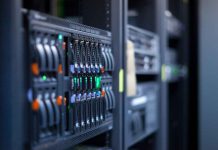LONDON – TECH – The world of business is increasingly driven by mobility and the internet. As a result, there is also an increased need for IT startups, particularly in Hartford and Southington. Businesses need to make sure that their IT infrastructure is effective and reliable, say experts such as Mike Giuffrida. This, in turn, means they must include 10 specific elements.
Mike Giuffrida’s 10 IT Infrastructure Necessities
The 10 necessities are divided into different elements, being business continuity, user access, IT assets, and workplace security. The 10 necessities are:
- That the organization has a proper information security policy in place. This must be available to employees and it must be followed completely. It should also highlight the goals in terms of IT security for the business.
- That there is a proper disaster recovery solution in place. Downtime is expensive and a procedure should be in place to minimize this if a disaster does occur.
- That there is a strong focus on the maintenance and development of the IT infrastructure. IT technology is out of date almost as soon as it is released and it is important, therefore, that it remains fit for purpose at all times.
- That system recovery tools are in place for when something has to be repaired, which will happen. Often, this is included as standard with the operating system, but it is important to be aware of it regardless and to have one set up if it is not included as standard.
- That operations management and communications lie at the heart of the IT infrastructure. They are responsible for implementing, maintaining, and communicating security. Additionally, it should ensure that the right people have the right access to the system.
- That there is significant access control. The vast majority of IT problems are caused by human error. This can be avoided by making sure that people don’t have access to areas they have no need for.
- That an electricity backup is in place. No IT system can run without electricity. Hence, a reliable power source must be in place and there should be clarity over what will happen if that source is compromised for whatever reason.
- That all IT assets are inventoried. It should highlight what is available, how old it is, where it is located, who uses it, when it was last updated, and so on. A good security system will immediately be able to identify where a problem is located so that it can be shut down as well.
- That spike guards are put in place. The larger the business, the bigger the IT infrastructure, the more power is needed. However, this significantly increases the chance of a voltage spike, which can wreak havoc not just with the power grid but with all elements of the equipment as well. Spike guards should be in place to stop this from happening.
- That appropriate security controls are put in place. The policy must define what the controls are as well.







